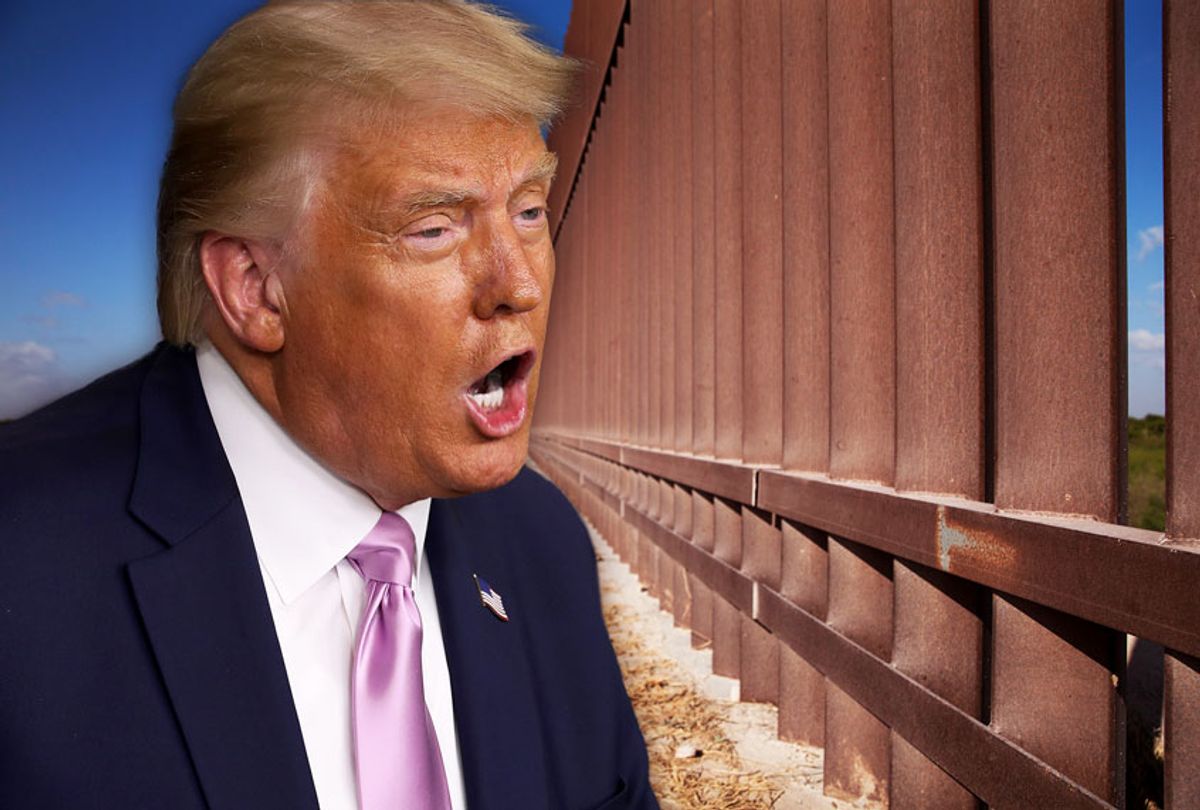On election night in 2016, Donald Trump stood victorious before the TV cameras and made a promise.
"We are going to fix our inner cities and rebuild our highways, bridges, tunnels, airports, schools, hospitals," he said. "We're going to rebuild our infrastructure, which will become, by the way, second to none, and we will put millions of our people to work as we rebuild it."
The statement was a conciliatory note at the end of a campaign marked by exaggeration, vitriol, scandal, racism, xenophobia, and misogyny. And in the immediate aftermath of the election, as voters and politicians tried to recover from the whiplash of election night, it had an effect. Wishing to find some aspect of Trump's platform that they could endorse, or a reprieve from the full-blown partisan division they knew would worsen, many of Trump's opponents said they would cooperate with him to plan infrastructure investment. Urban voters across the country had voted to spend on new, taxpayer-funded transit projects, signaling that infrastructure could be a scarce bit of common ground, as the New York Times reported. Jim Kenney, the Democratic mayor of Philadelphia, a liberal stronghold in a state that favored Trump by a razor-thin margin, said that if Trump wanted to invest in big infrastructure projects, "I'm all for that because that means jobs."
Over the last four years, the Trump administration and Democrats in Congress have made repeated overtures to cooperation on an infrastructure deal. But there is still next to nothing to show for Trump's promises, and much of the national infrastructure is simply four years older. Why couldn't Trump deliver a deal? And in swing states like Pennsylvania, with hundreds of deficient bridges, aging drinking water systems, and transit networks on the verge of pandemic-induced crisis, could that broken promise have consequences in the 2020 election?
According to the American Society of Civil Engineers, most of America's infrastructure is in poor condition, "with many elements approaching the end of their service life." ASCE gave the country a D+ on its 2017 "infrastructure report card," which assesses everything from ports and dams to transit, schools, and hazardous waste management. Pennsylvania fared slightly better than the U.S. as a whole in 2018, according to the ASCE, but got low grades for the state of its roads, bridges and transit and water systems. More than 18% of the state's 22,779 highway bridges are in poor condition, according to the report—a better rate than in 2014 but still twice the national average. Meanwhile, water-main breaks are increasing across the state — just this week, a water-main break in Montgomery County, outside Philadelphia, caused officials to issue a boil-water advisory for more than 30,000 households. Public water systems that provide drinking water for Pennsylvania's cities and towns face a $10.2 billion funding gap, according to the report. Only 10 percent of the funding needed to keep the state's wastewater systems in good condition over the next decade is available. Transit and highway projects tend to get the most attention from public officials, says Cathy Farrell, ASCE's co-chair for Pennsylvania's 2018 report card, but the need for investment goes deeper.
"There's categories of infrastructure that you don't necessarily see until it fails, but when it fails, it's a really bad failure," Farrell says.
Investing in infrastructure beyond the most critical repair needs can benefit the economy too, studies show. The Council of Economic Advisers found in 2009 that every $1 billion of highway spending supports 13,000 jobs for one year. More recent CEA studies, under both the Obama and Trump administrations, have identified short- and long-term economic benefits to investing in transportation systems and other types of infrastructure. The construction industry trade association Associated Builders and Contractors estimates that every $1 billion of construction spending creates an average of 6,300 construction jobs. Fully funding the country's water-system needs could create 800,000 jobs and expand GDP by $4.5 trillion over 20 years, according to a report from the ASCE. A 2014 report from the Economic Policy Institute (EPI) concluded that spending at any level would create short-term increases in employment and economic activity, with more benefits tied to bigger investments.
As Capital & Main reported earlier this year, income growth has slowed during Trump's first term, especially for the poorest households — a trend that could make income inequality worse over time, and which could have been mitigated by investments in infrastructure. In 2017, EPI produced a study concluding that infrastructure spending can boost the overall growth of the economy. The same year, researchers at the University of Georgia found that spending on maintenance can "foster the more equitable distribution of wealth" as well.
And such investments are popular with voters. A Gallup poll conducted in March of 2016, when Trump, Hillary Clinton, and Bernie Sanders were all touting plans as part of their campaigns, showed that 75 percent of voters agreed that the U.S. should "Spend more federal money to improve infrastructure, including roads, buildings and waterways." In its own polling, Data for Progress found broad support for investing in drinking-water infrastructure, even in the partisan context of a Green New Deal.
* * *
Given the obvious needs and benefits, deep popular support, and the appearance of bipartisan agreement, how did the prospect of a Trump-era infrastructure deal turn into a "long-running joke?" On one hand, Trump's early proposals relied on tax credits and public-private partnerships to turn around $200 billion of actual federal spending into a $1 trillion deal. And from early in the administration, Republican Congressional leaders like Paul Ryanand Mitch McConnell were signaling that they wouldn't support large federal expenditures that weren't deficit-neutral. The administration was also immediately beset by scandals that have not abated.
"We had four years of missed opportunity because the White House was breaking the law and getting impeached," says Kevin DeGood, the director of infrastructure policy at the left-leaning Center for American Progress. "They never spent any time trying to make this a domestic priority, and for ideological reasons, the Congressional leadership was opposed to doing it."
David N. Taylor, president and CEO of the Pennsylvania Manufacturers' Association, says he was hopeful early on that the prospect of a deal would unite labor unions and business interests in Pennsylvania to support "hard hat jobs for working people." But he blames "radical greens who don't want shovel to touch dirt" for preventing a bipartisan deal, and the chaos of the COVID-19 pandemic for ruining any lingering hope of an agreement this year.
"I think especially at the federal level there's extreme partisan rancor, and the Democrats don't want to give the president a win on anything going into an election year," Taylor says.
But Trump's plan was challenged by more than partisanship. The early proposal, which was built around a more or less arbitrary price tag rather than a set of goals, was a "fantasy," says Adie Tomer, a fellow at the Metropolitan Policy Program at The Brookings Institution.
"It was never clear what the cause was," Tomer says. "Saying 'I want to rebuild roads and bridges' and whatever words they use sounds great, but that does not a political coalition make. It doesn't scream 'priority' to the voters."
Still, if the Trump administration missed an opportunity to build an infrastructure deal with Congress, it's not clear that voters will hold it against him. A Pew poll from this summer found two thirds of voters believe the federal government should play a "major role in maintaining roads, bridges, and other infrastructure," but more than half of respondents said that it was already doing a somewhat or very good job. Going into October, Joe Biden had a relatively comfortable polling lead in Pennsylvania, which could be a decisive swing state on election night. Biden and Democrats in Congress have been touting their own infrastructure plans, which are increasingly tied to climate mitigation and adaptation goals. Infrastructure is "not what gets voters to the polls," Tomer says. But to the extent that it is a salient voting issue, it's probably connected to growing concerns about climate change, especially among Democrats.
* * *
The U.S. will face hard challenges to repairing and enhancing its infrastructure no matter who wins the election. While the Green New Deal has been a powerful organizing principle for the left over the last few years, the concept has proven in some cases to be politically toxic on the right. Infrastructure spending by the federal government as a share of GDP has been cut in half over the last 35 years, according to the Center on Budget and Policy Priorities. The federal gas tax, which is the primary source of federal funding for surface transportation, has not been raised in 27 years, leaving cities and states to pick up more of the slack. And structurally, the federal government is not well set up to make large, strategic investments in projects that don't have short-term payoffs for private investors.
Saule Omarova, a professor specializing in financial regulation at Cornell Law School, has argued that the U.S. should establish a "National Investment Authority" to coordinate spending, rather than deploying funds piecemeal to support projects that the private market won't touch. Even if a deal had been struck in the last four years, Omarova says, the money would likely be spent on removing some of the risk from projects that private investors were already interested in. A better way to care for the country's infrastructure, more accountable to the voters, would be for the federal government to organize private markets and its own investments around national priorities, she says.
"It needs to have an administration that is fully cognizant of the power of the federal government, is not afraid to use that power, and is pragmatic about how to use it to the public benefit," Omarova says. "That kind of thinking, that kind of ability and resolve, the Trump administration has not shown at all."
Copyright 2020 Capital & Main




Shares